Anna Hultin’s embroidery artwork provides vivid portals into Colorado’s breathtaking seasonal landscape. Look closer, and textural patterns bloom on the fabric. Take a step back and watch as a single thread transforms into a horizon line. On the Land embraces the Hultin’s environs in all their colors and offers a sensory experience that you will want to reach out and touch. Art Editor Arah Ko and Associate Art Editors Heather McCabe and Cat McMahan interviewed Hultin about her creative process.
Website: https://www.olandercoembroidery.com/
Instagram: https://www.instagram.com/olandercoembroidery/
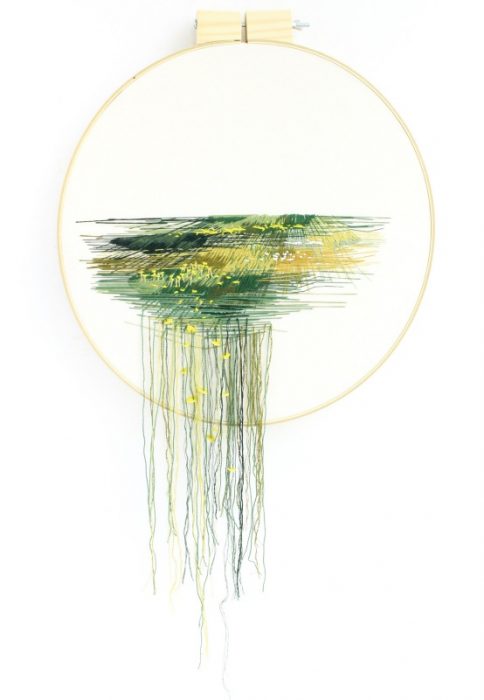
Arah Ko: Can you tell us a bit about your process? How do you begin creating one of these pieces?
Anna Hultin: I usually start by getting out in nature and observing the landscape firsthand. Because I’m often surrounded by my three children when this happens, I don’t always get the time to sit down and sketch, but I do take as many photographs as I can. From there I visualize my compositions in the studio with sketches. After that, I dive into stitching a piece. It’s in the process of stitching that the work really comes together. Most times it ends up completely different than I’d envisioned. I take a lot of photos of my in-progress work and look at it throughout my day to let the composition simmer in my mind.
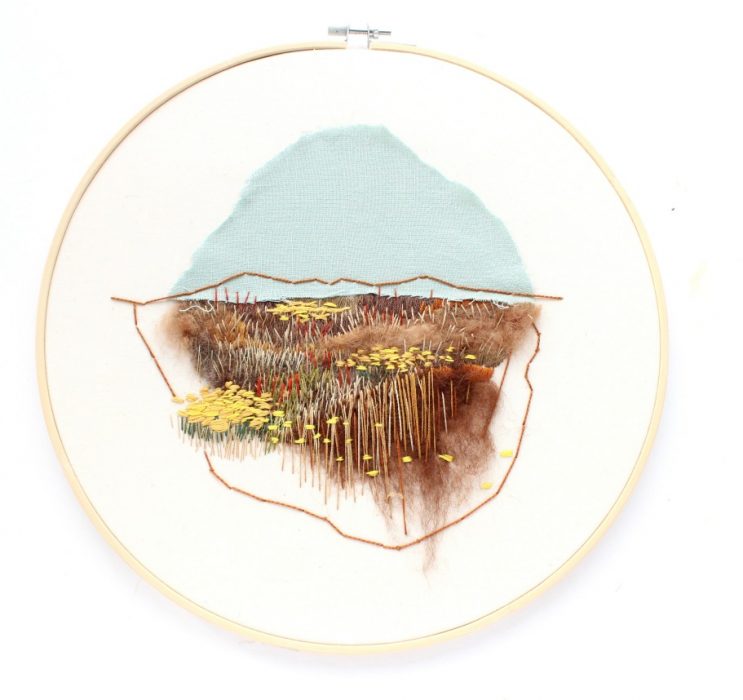
Cat McMahan: How did you get started with embroidery? How has your style changed since you started and where do you think it might be going?
AH: When my first son was born nearly 7 years ago I had been heavily involved in the gallery community in Denver. After his birth, I wanted a change. I didn’t have a studio at the time and creating large-scale installations didn’t feel feasible anymore. I also wanted a mental break from conceptual art so I decided to pick up a needle and thread. I wanted to learn a simple craft. Something my grandmother might have done in her time. Little did I know where it would lead me! When I first started I focused mainly on realistically depicting plants and trees in the style of botanical illustration. I did a few abstract landscape studies with embroidery (much like what my old drawing used to be), but I was never fully happy with them. During the start of the pandemic when we were isolating at home I started working in the studio much more and my work rapidly evolved. I started incorporating more of my abstract landscape ideas and my current style became cemented. At the moment I’m not exactly sure where my style is heading, but I have a lot of seeds of ideas that I want to pursue and follow.
AK: I know you also work in other mediums such as drawing and installation–how does embroidery art compare? What are some of the challenges or advantages of using a needle and thread?
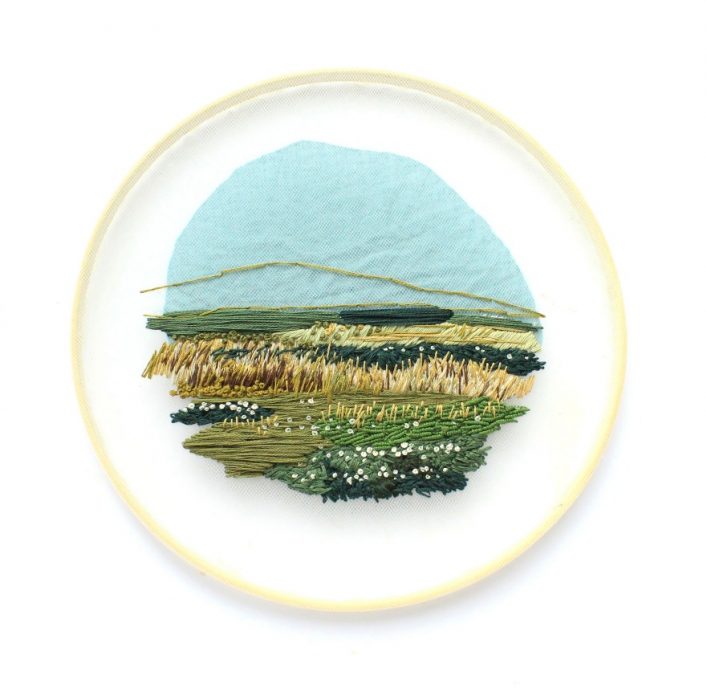
AH: The nice thing about embroidery is its flexibility. It fits well into the rhythms of motherhood. I can be working on a piece and when someone is up from a nap early or the baby wakes to nurse I can shove it into a basket and pick it up another day. I also don’t need a studio to do it (even though I have one now) which means that I can squeeze it into the small bits of time I have here and there to get work done. It’s much easier to sit down on the couch and stitch for an hour here and there than it is to get out to my studio most days.
Heather McCabe: I’m impressed by the sense of movement and depth in your work—how does embroidery as a medium push you to consider composition and perspective when the thread is always piercing the same plane?
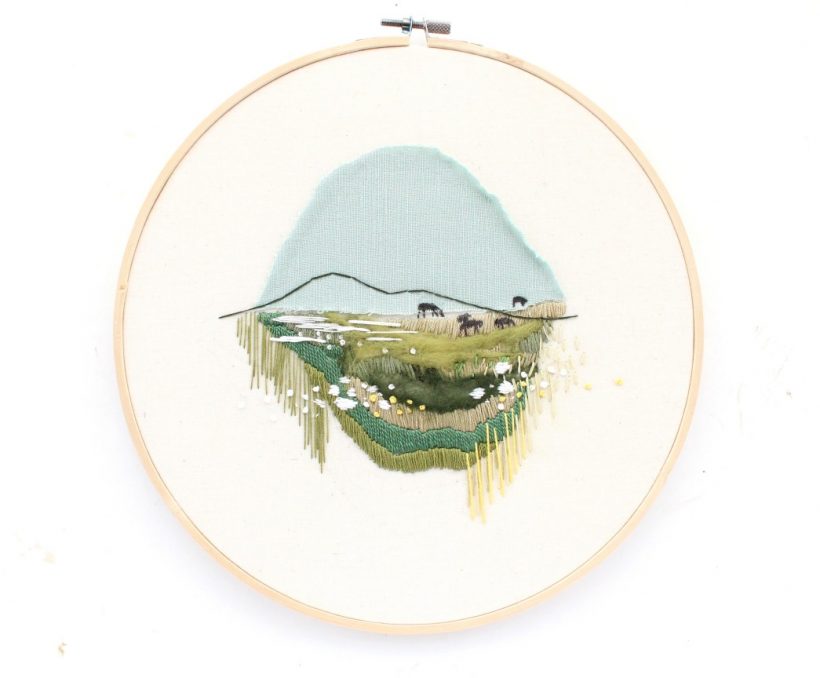
AH: I think that the tactile nature of thread encourages depth and movement. It has literal depth to it and this helps me when I’m thinking of each stitch as a blade of grass or plant moving in the landscape. The hoop format also has an interesting effect on composition. The circle creates a sense of movement that I use compositional elements to highlight.
AK: Framing and perspective seem to be important to your art–I love seeing the thread appear to “spill” off the fabric–how do you decide when to resist these borders?
AH: I was inspired by the work of Ana Teresa Barboza who often has compositions that spill out of a border so I started experimenting with that in my own work. This idea has a lot more potential that I’m excited to explore and push in the coming years.
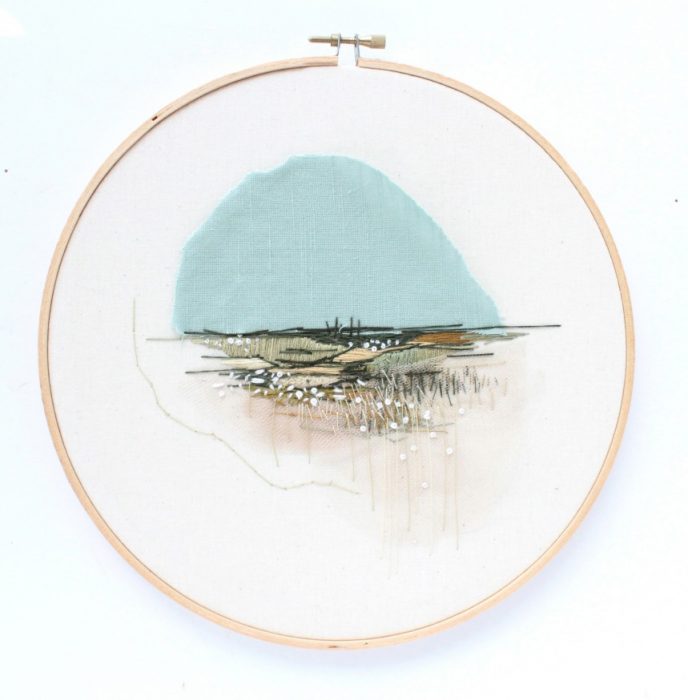
HM: I’m curious about the textural qualities of handmade art—are you interested in embracing the handmade quality and whatever maker’s marks appear or do you attempt to obscure those features?
AH: I think that the maker’s marks are the most interesting part of any work! My favorite part of my pieces is the back of the hoop because it shows all the work, all the stitches. My work is far from perfect and I never try to hide that. I do end up backing the hoop with felt for support which sadly hides the beautiful mess in the back.
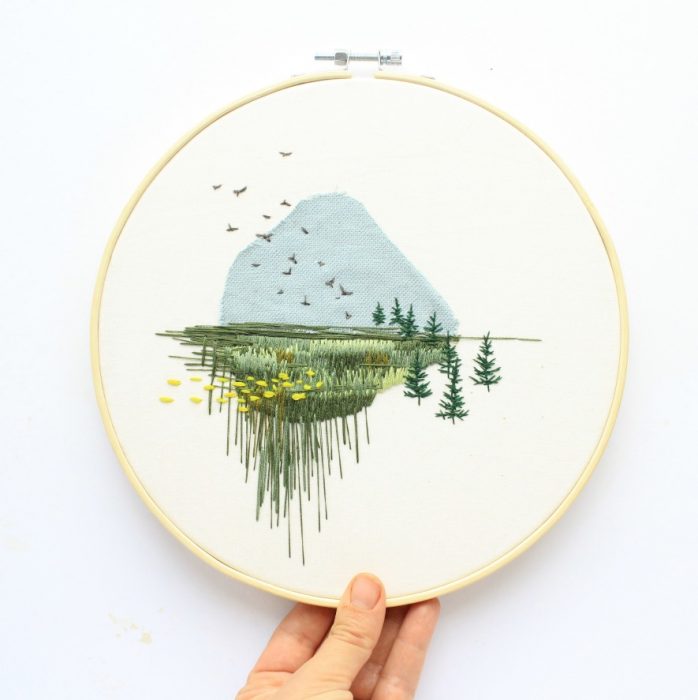
AK: Why landscapes? Do you draw inspiration from any particular artists or places?
AH: In my art, I find purpose in revealing beauty that would otherwise go unobserved. Everyone knows a majestic, snow-covered mountain is beautiful, but what about the subtle shift in texture from one rock to another? To appreciate that, you must stop and look closer. The stunning Rocky Mountains, Colorado’s calling card, are an obvious source of beauty and inspiration, but I have found a love for the more subtle textures of the grasses and reeds in the foothills and plains. It is my job to showcase and honor these “undiscovered beauties” in an effort to increase people’s appreciation of the natural world surrounding them. By bringing to life the riotous beauty I see in what would typically be regarded as a monotonous landscape, I offer my audience a new framework from which to view their environs.
AK: What is next for you as an artist? Is there anything you would like to explore?
AH: Since I just had my 3rd baby a few months ago things are a little quiet on the artistic development front for me right now. My mental load is full so I will focus on simply creating work for the joy of it. Once I have recovered from this season I want to push my work to be bigger. I want to know what it looks like when one of my landscapes takes up an entire wall instead of a small hoop. I’ve learned that as an artist (just as in life) all things happen in seasons and the key is to be present to the season you’re in.
